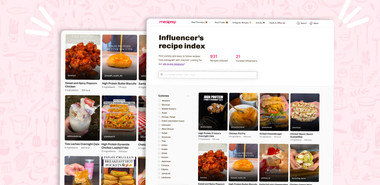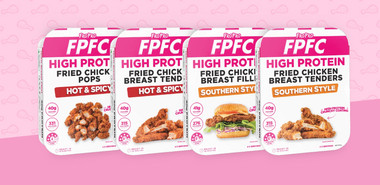
We all know the importance of eating a balanced and healthy diet, and it’s not just because it’s good for your waistline. Eating nourishing, wholefoods is vital for your inner health, but it’s also crucial to your mental and emotional health too. However, this year has unfortunately seen many of us out of work and living on a tight budget, making eating well (and at a time when it’s incredibly important to be looking after our well-being) a struggle.
In fact, lack of time and a small budget is the biggest barrier to eating a good diet. Sadly, processed fast-food becomes the go-to for many because it’s a quick and cheap way to eat. However, fast-food and many processed foods are hugely calorific, sugar-laden and packed with preservatives – none of which makes a healthy diet. Interestingly, processed fast-food isn’t much cheaper than eating healthy, wholefood meals. That’s why in this article we’re offering our best tips to eating well on a budget, so no matter what your financial situation, you can have access to healthy and balanced meals every day of the week.
1. Plan ahead
This is one of the most common pieces of advice to shopping and eating healthy on a budget. When you plan ahead, you’ll not only decrease the chance of over-buying and food wastage, but you’ll also be able to take the time to consider what you need to make a healthy and balanced meal. Whether you do it old school by writing out a shopping list or use a budget-tracking app for food and groceries, sticking to a list can help you avoid impulse purchases, which are often the main culprit when going over your shopping budget. But how do you know what you need? A quick Google search of “cheap and healthy” recipes should do the trick! Then you’ll know exactly what to buy when you do your weekly shop, and won’t be left scratching your head in the fresh-food section.
2. Choose wholefoods over processed meals
It’s a myth that processed food is cheaper than buying wholefoods. It’s also important to note that eating unhealthy food now will lead to an unhealthy body down the track, which can ultimately increase your medical bills as you try to fix the effects of a junk-food diet with pills and other medications. Making healthy food choices today can save you a lot of strife and potential health issues down the line, and that starts with choosing wholefoods. You don’t have to buy fresh wholefoods either, as frozen fruit and vegetables pack just as much punch as their fresh counterparts, while typically being cheaper and lasting longer, too.
3. Buy generic brands
Don’t be fooled into thinking buying well-known food brands is better than the cheaper home-brand version. In fact, home-brand products like Woolworths, Coles and Aldi generally offer the exact same quality product, but at a much cheaper price-point.
4. Buy in bulk
Buying non-perishable items in bulk (such as fish, beans, rice) can actually save you money. While we don’t want to promote hoarding, buying items in bulk, especially when on sale, works out to be much cheaper than buying single-use every time you shop. Don’t go crazy with over-buying (leave some for the rest of the shoppers!), but do try to look out for pricing by weight, as the more you buy, the cheaper it works out to be when you break it down into cost per serve.
5. Ditch the meat
No, we’re not telling you to go vegan or vegetarian in order to eat well on a budget, but it is a good idea to consider cheaper protein sources. Protein is an essential part of the human diet, but there are plenty of places to get your protein hit that don’t need to come from animals, which are the most expensive protein options. Beans, legumes, tofu and grains like quinoa are excellent (and wallet-friendly) proteins you can add to your diet. Or, if you really do love your meat, try looking for cheaper cuts of meat, for example chicken thighs over breasts. You can also bulk out meat dishes with pasta, veggies and other whole grains to make it more filling, yet also budget-friendly. Canned fish or chicken is also a healthy and inexpensive option for sandwich fillings, or to throw into a salad.
6. Consider meal kits
Meal kits are an excellent way to ensure you’re eating a balanced and healthy diet, while also making it simple to stick to your budget. Most meal kit providers offer an easy breakdown of nutrients per dish, as well as how much money it costs per meal. This not only makes it easy to keep track of your nutrition intake, but also how much you’re actual spending on each meal. There are different plans and meals you can choose from across a range of providers, and there’s something for everyone. You can check out some of the best Aussie meal kits here, or ready-made meals here.


